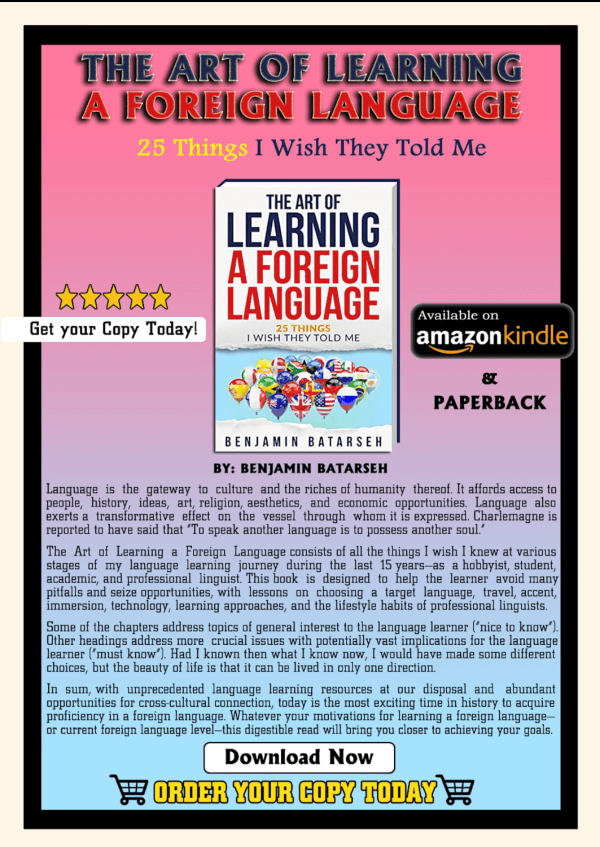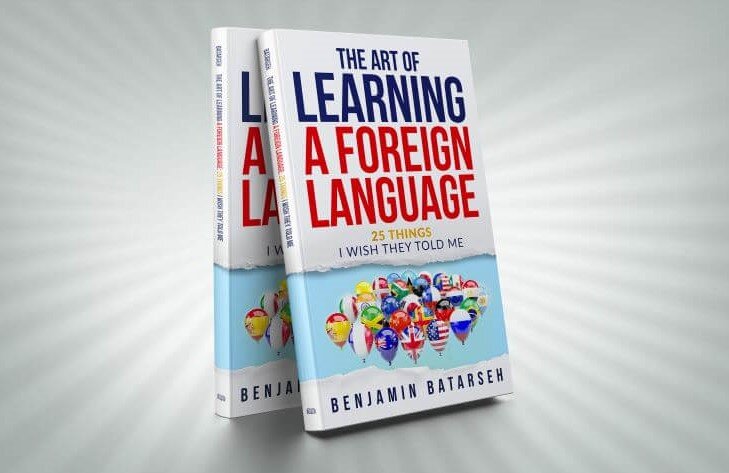
Today, I’m excited to announce the release of my new book, The Art of Learning a Foreign Language: 25 Things I Wish They Told Me, now available on Amazon in Kindle and paperback formats! Check out the Table of Contents, Book Description, Excerpts, and Author Bio below! You can also listen to a professional narration of the book on Audible. (See El Arte de Aprender un Idioma Extranjero for the Spanish version.)


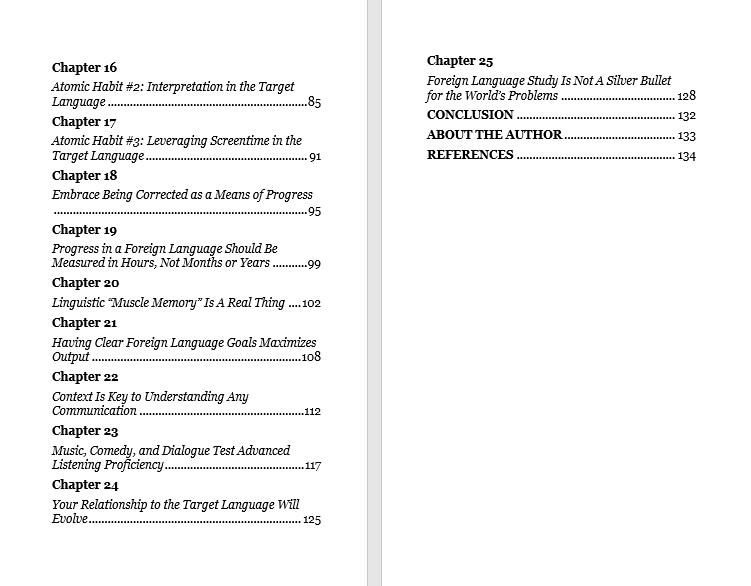
The Art of Learning a Foreign Language Book Description:
Language is the gateway to culture and the riches of humanity thereof. It affords access to people, history, ideas, art, religion, aesthetics, and economic opportunities. Language also exerts a transformative effect on the vessel through whom it is expressed. Charlemagne is reported to have said that “To speak another language is to possess another soul.”
The Art of Learning a Foreign Language consists of all the things I wish I knew at various stages of my language learning journey during the last 15 years—as a hobbyist, student, academic, and professional linguist. This book is designed to help the learner avoid many pitfalls and seize opportunities, with lessons on choosing a target language, travel, accent, immersion, technology, learning approaches, and the lifestyle habits of professional linguists.
Some of the chapters address topics of general interest to the language learner (“nice to know”). Other headings address more crucial issues with potentially vast implications for the language learner (“must know”). Had I known then what I know now, I would have made some different choices, but the beauty of life is that it can be lived in only one direction.
In sum, with unprecedented language learning resources at our disposal and abundant opportunities for cross-cultural connection, today is the most exciting time in history to acquire proficiency in a foreign language. Whatever your motivations for learning a foreign language—or current foreign language level—this digestible read will bring you closer to achieving your goals.
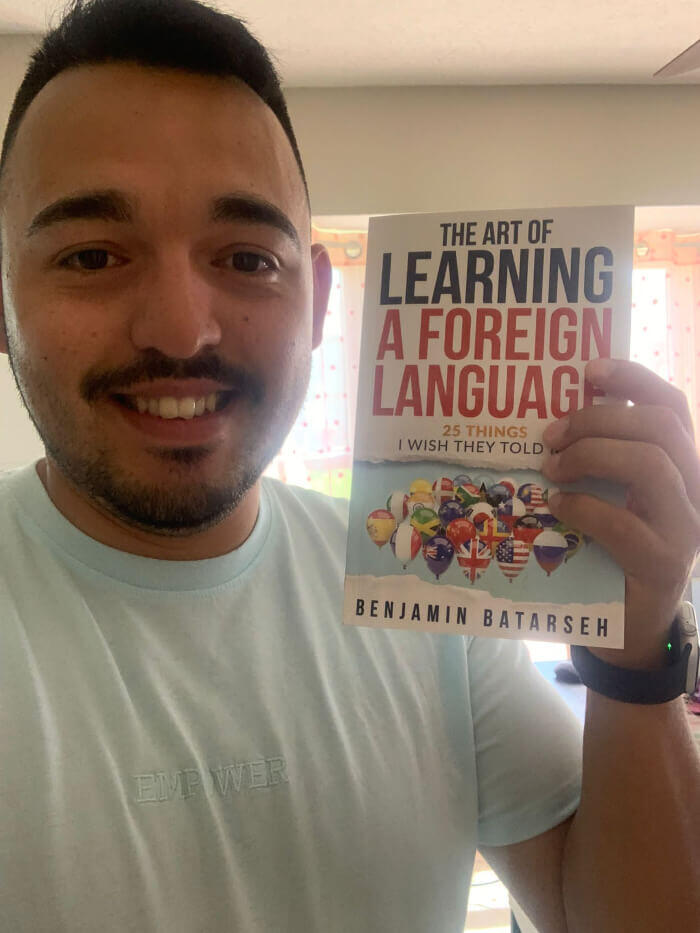
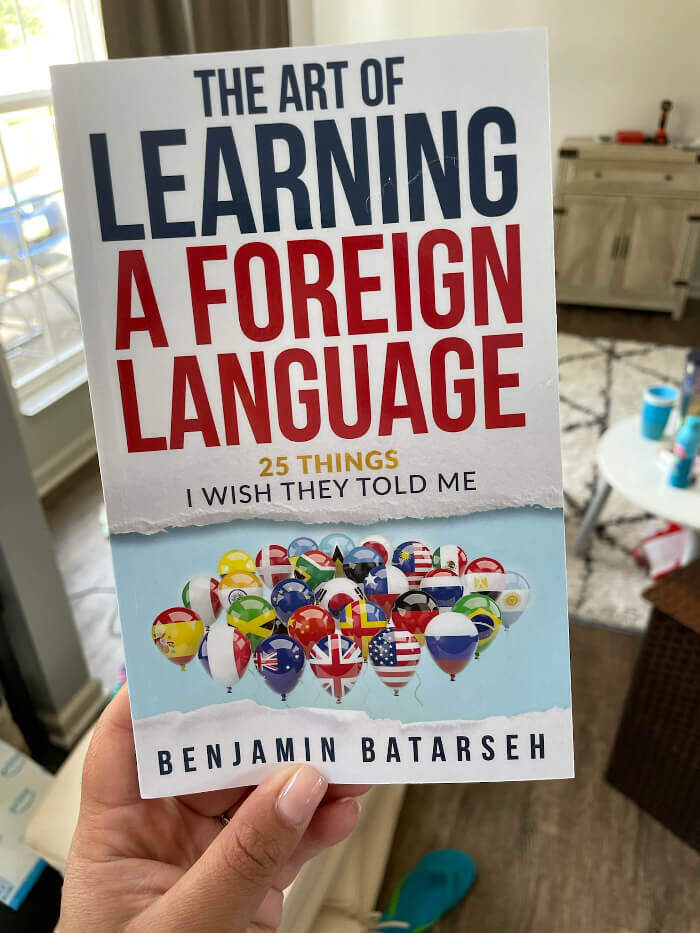

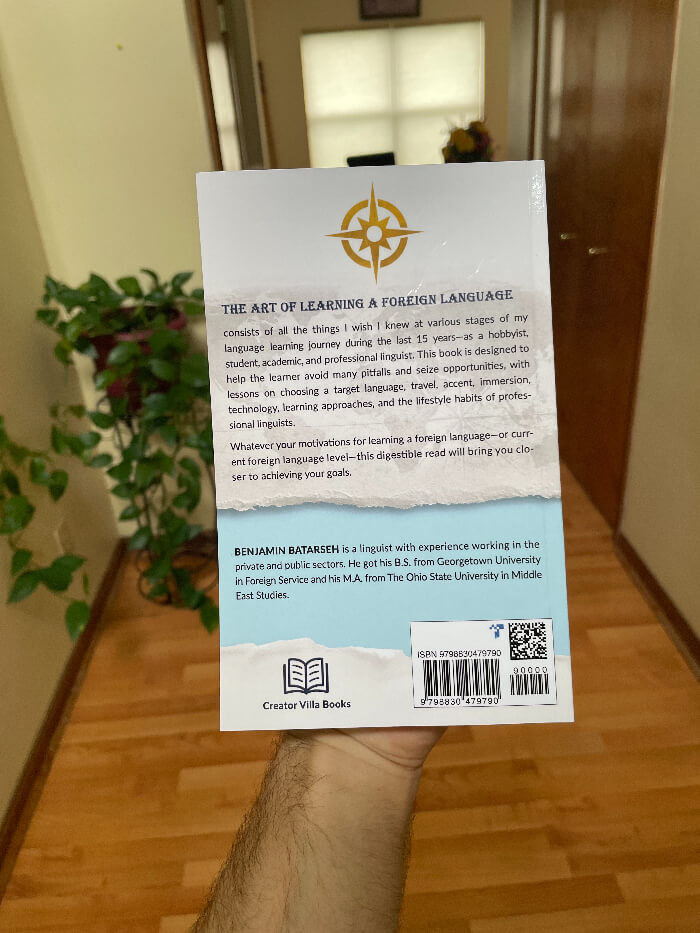
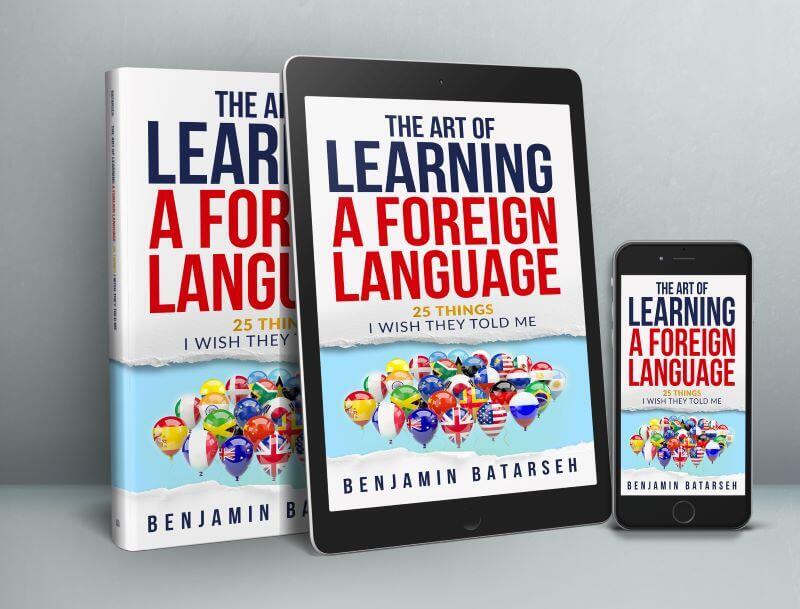
The Art of Learning a Foreign Language Book Excerpts:
From Chapter 2 on “To Learn A Foreign Language Is To Become A Child”
“Fear of appearing stupid, ignorant, or childish is a nemesis of learning, and language learning is no exception. Frustration is inevitable, but it doesn’t have to be final. It’s always a letdown when a language learner loses motivation, stops engaging in the target language, or abandons the endeavor altogether. It follows that learning how to manage our emotions and take a long view of situations (i.e., “respect the process”) is critical to weathering the storms of acquiring a new skill. Like a baby learning how to walk, we deserve credit for every milestone we attain and for mustering the courage to confront the unknown.”
From Chapter 4 on “Studying Grammar and Looking up Words You Don’t Know Improves Your Language Skills Exponentially”
“Every dictionary entry or grammar rule worth its salt is complete with example sentences. Example sentences reinforce, contextualize, and activate; they inspire confidence, as per above, and keep the learner from making silly mistakes. In addition to example sentences, this chapter is premised on abundant exposure to the target language via reading, listening, speaking, and writing. Indeed, these activities are what prompt most word look-ups and grammar consultations. It follows that the more language input we feed ourselves with, and the more language output we generate, the more relevant the question becomes of whether to look things up.”
From Chapter 5 on “Avoid Burnout by Making Friends in the Target Language and Engaging in Passive Language Activities”
“Burnout is also why passive language learning activities can sometimes be very beneficial. For example, relaxing to a song, movie, book, or conversation in a target language without looking up any words or preoccupying the mind with linguistic minutiae. In these moments, learners can focus on mastering what they already know. As for the unknown, they can draw inferences based solely on context without racking their brains. Passive language activities are doubly productive when learners have acquired a solid language base, without which their ability to rehearse, refine, and infer is constrained.”
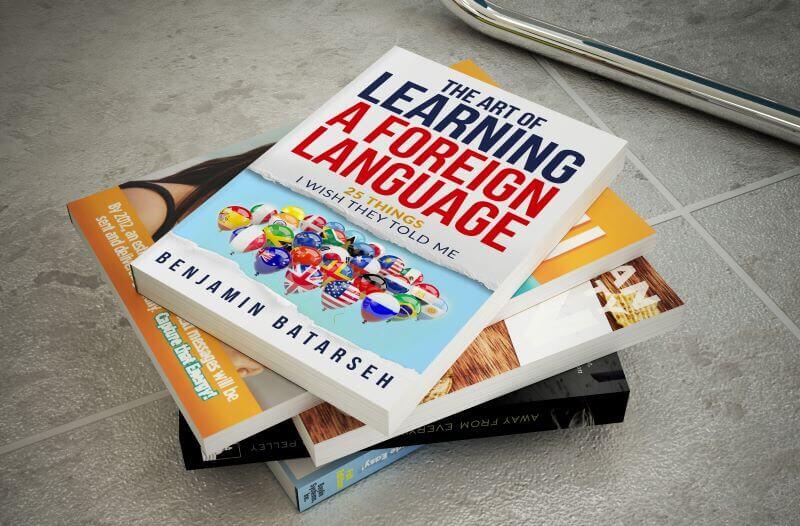
From Chapter 6 on “Your Native Language Ability Influences Your Potential In A Foreign Language”
“Worldly knowledge, reasoning ability, and linguistic creativity quickly convert into a target language as soon as they are given a vehicle for expression. A 24-year-old, for example, who traveled, went to college, and and gained life experience has a much higher linguistic ceiling than the 16-year-old version of themselves. While they both start from square one, the one with stronger native language skills is going to progress further and faster.”
From Chapter 8 on “The More Foreign Languages You Know, The Easier It Is To Learn New Ones”
“The hardest foreign language you will ever learn is your first one. And the second hardest foreign language you will ever learn is your second one. In other words, language learning gets easier with each subsequent iteration. This phenomenon owes to the fact that languages, especially those belonging to the same family, share a great deal in terms of grammar, syntax, phonetics, and vocabulary. . . Not only are many of the concepts repetitive across languages, but learners become more adept at recognizing patterns, formulating sentences, and memorizing information.”
Chapter 12 on “Learning A Foreign Language May Change Your Personality”
“In a foreign language, a lot of social and psychological conditioning gets thrown out the window. First, you begin to interact with people who do not know you outside of the target language. The blank canvas effect here is true of any new people you meet, in general. Second, every language is a world unto itself. It is common to hear people comment on the particularity of an individual’s foreign language skills. “She speaks French well. His Spanish is formal or funny. I want to hear them speak Arabic.” In other words, people expect there to be some differences between the native-language version of yourself and the target-language version. If you want to exaggerate these differences, then more power to you. As the saying in the intro goes, the multiple personalities effect with people who speak more than one language is real but bears none of the oft associated pathology.”
From Chapter 15 on “Atomic Habit #1: Thinking In A Foreign Language”
“Even this lower new data amounts to a grand average of more than six thoughts per minute, or a thought every ten seconds, which, to my mind, is an incredibly high number. There’s a reason almost all humans are proficient in at least one language. With that much action in between the ears comes a lot of opportunities to improve language skills. . . As linguists and language learners, we can channel our brain’s verbal activity to improve or maintain our language skills, without making any major modifications to our lifestyle or environment.”
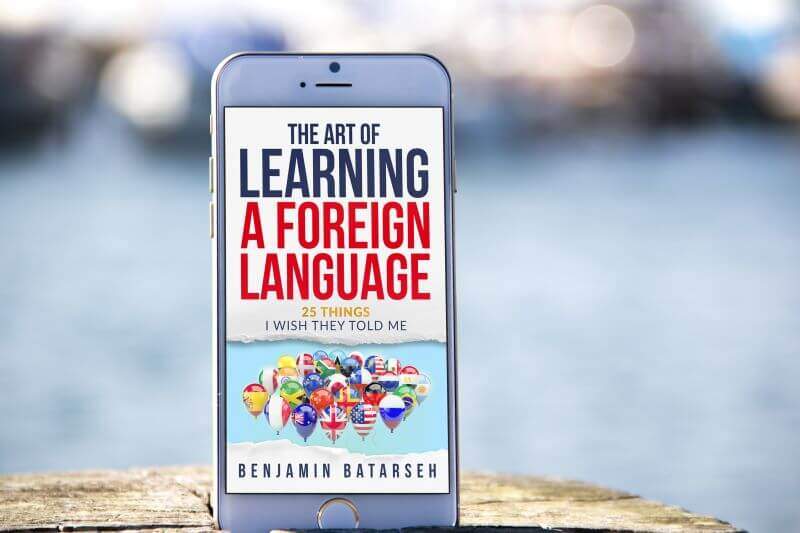
From Chapter 20 on Linguistic “Muscle Memory”
“I have a friend from my graduate school days at The Ohio State University whom we nicknamed Aladdin. Aladdin and I took a number of Arabic classes together. Every now and then, we would play pick-up basketball at the university gym. Aladdin couldn’t shoot, but he was one of the quickest, most intense defenders I have ever seen. One day, he went high up for a layup at 100 mph, bumped a defender, and fell square on his head. Aladdin lay there motionless for a few minutes before gingerly getting up. He had apparently suffered a concussion. We drove him to the ER, before he decided in the reception that he felt okay enough to go home. I’ll never forget, while we were leaving the gym and during the car ride, Aladdin kept asking people to speak Arabic to him. I probably heard the phrase “Speak Arabic to me, Binyamin! [my Arabic name]” at least two dozen times. Aladdin, in his dizzied and confused state, waiting to be seen for a potentially serious injury, was afraid that he had forgotten Arabic. The next day Aladdin texted everyone saying he felt fine. In hindsight, this story is a comical illustration of every language learner’s worst fear: losing the skills they worked so hard to acquire. As it turns out, Aladdin didn’t forget Arabic and currently lives in Dubai. . .
Chapter 21 on “Having Clear Foreign Language Goals Maximizes Output”
“If you look around the room you are in right now, you will observe a great diversity of items, shapes, sizes, textures, colors, and functions, with all their associated nuances and subtleties. Every career, hobby, occupation, sport, industry, philosophy, plant, animal, object, event, and sensory experience–visual and otherwise–corresponds to a specific language. Language, in a word, is all-encompassing, and there are numerous registers, dialects, idioms, metaphors, and synonyms that express the same idea in multiple ways. “Mastering” one’s native language is a lifelong pursuit. Mastering a foreign language is an even taller order.”
Chapter 23 on “Music, Comedy, and Dialogue Test Advanced Listening Proficiency”
“In addition, to be “in on the joke,” the listener must possess a window into the culture in which it was birthed. Comedians are constantly telling stories that only people who have experienced similar things in life can relate to. Some themes are universal across time and places, whereas others involve local food, sports, traditions, celebrities, holidays, and shared cultural experiences from work, educational, and familial environments. Given that cultural products like these comprise the lion’s share of speech, knowledge of them is as relevant to the language learner as grammar and vocabulary.”
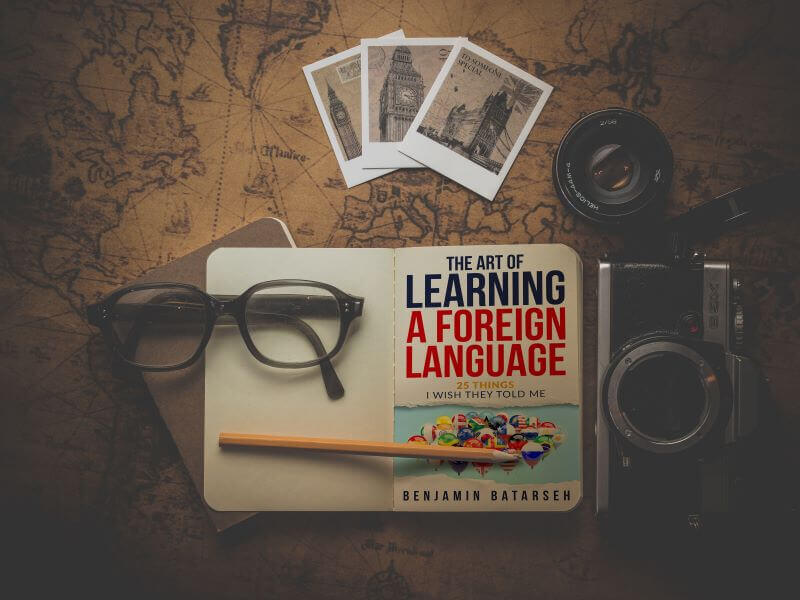
The Art of Learning a Foreign Language Author Bio
My journey with foreign languages began in high school when I was introduced to Latin culture through a friend and purchased a Spanish grammar book from Barnes & Noble. Fast-forward 15 years and I’ve spent a great deal of my life studying foreign languages (10+ years of Arabic and Spanish; 2+ years of Japanese and Latin; and < 1 year of French & German). I’ve lived in the Middle East, Tokyo, and DC, and worked multiple bilingual jobs, including my current one as a linguist in the American Midwest. Aside from being a language nerd, I enjoy blogging, web-making, hiking, and following professional sports.
